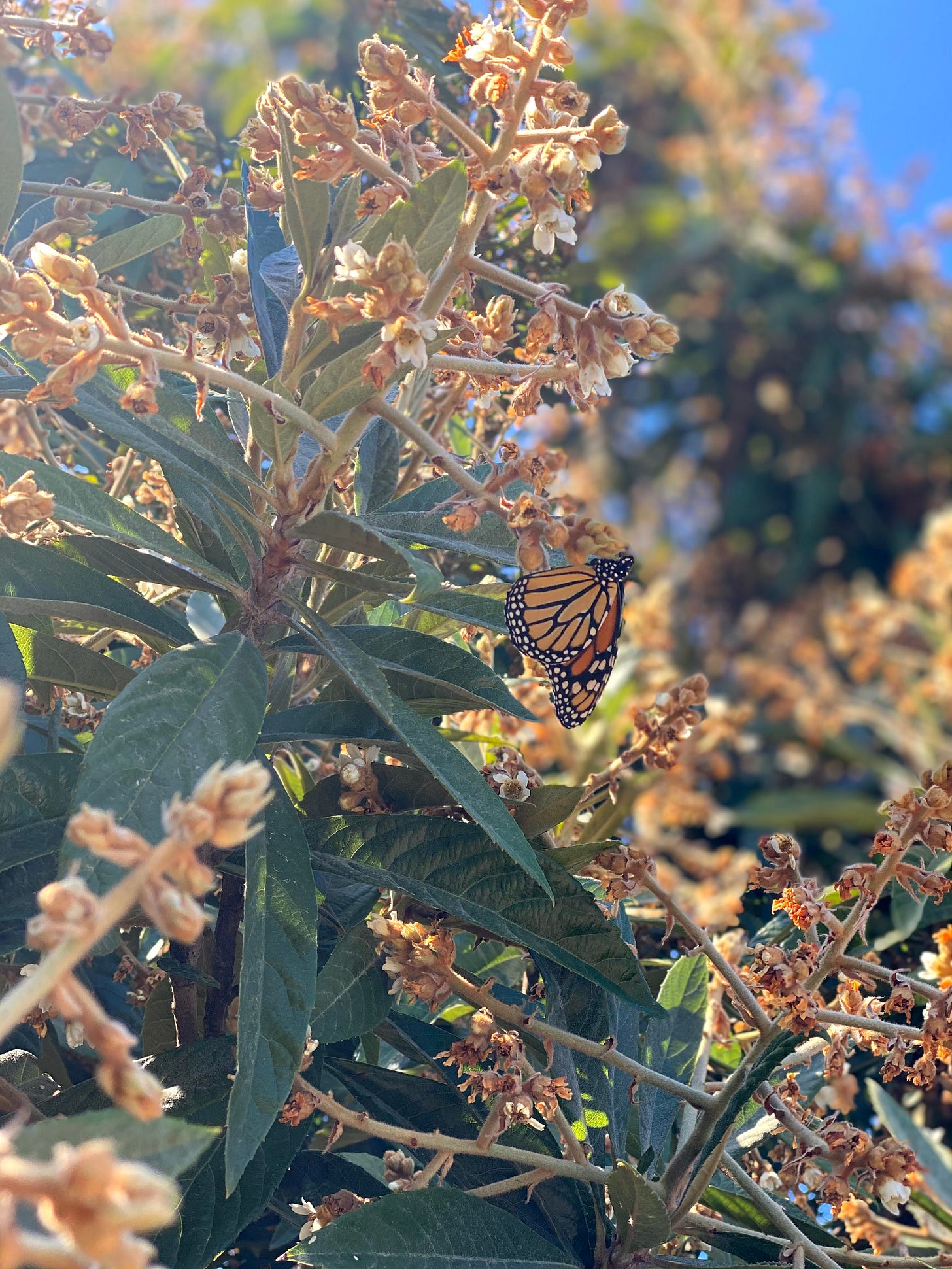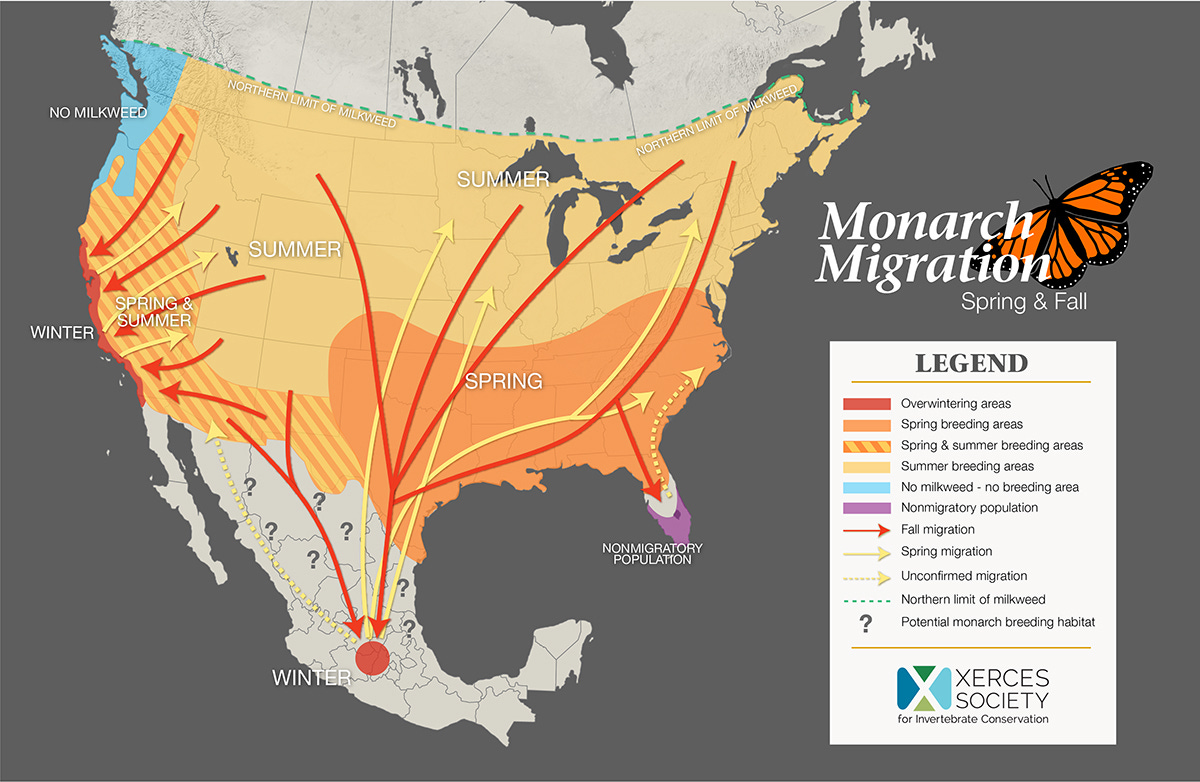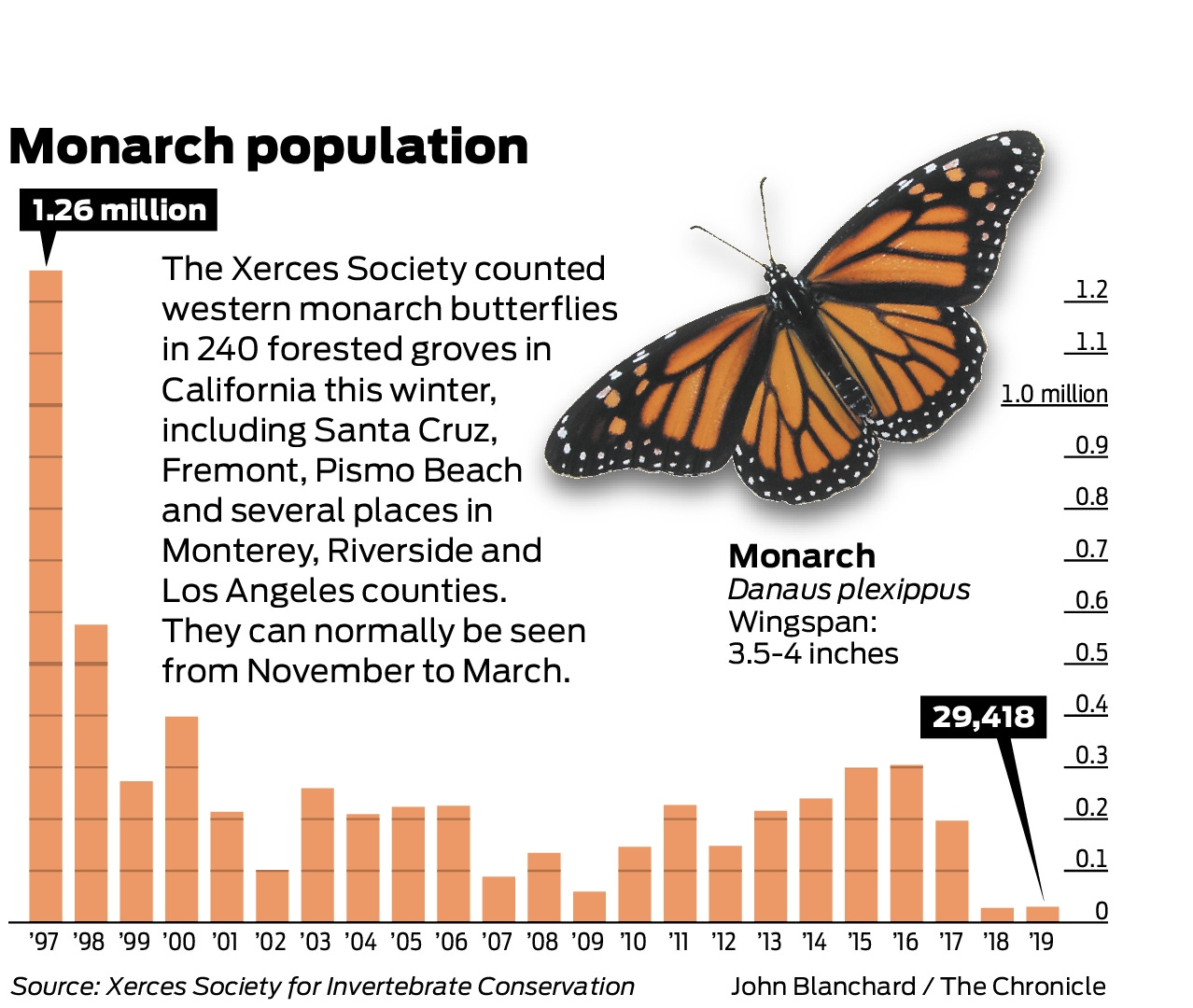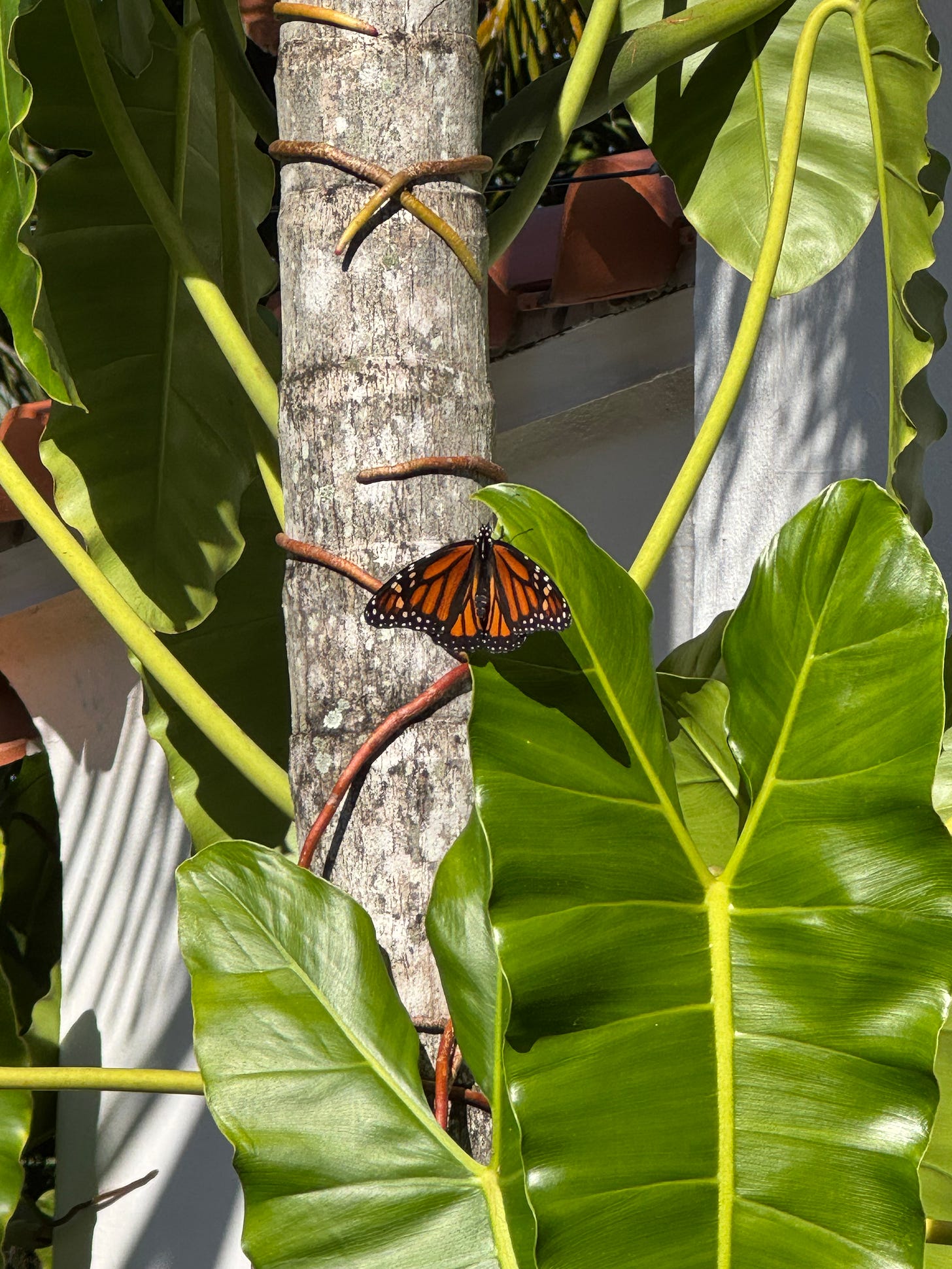Where Have All the Monarch Butterflies Gone?
Learn why this iconic insect is dangerously close to extinction and four things you can do to help save the monarchs!
It wasn’t until we moved to California in 2016 that we truly became aware of monarch butterflies (Danaus plexippus). On our winter excursions to Big Sur and Southern California, when the skies were this rich tone of cobalt blue, and the sun shone brightly overhead, one would appear like a fairy godmother fluttering around us as we hiked. It is a challenging photographic assignment to catch one in mid-flight. We got quite lucky with this shot below.
Once you notice them or sense their presence, you feel obliged to pause and just observe them in a vexed state somewhere between enchantment and bewilderment. reminiscent of a religious duty, where one must pay their respects to a force that is holier than thou. You are frozen in time and space, with no choice but to take in the wonder until it decides the moment is over and it flies away. And when it's over, the mundane feels a bit more special. One brief visit by a monarch butterfly can make a day or a lifetime.
It is only fitting that it was, according to legend, named after Prince William of Orange (later King William III), who was so adored by some early European settlers to North America that they bequeathed the name “Monarch” to this very regal butterfly in his honor. The scientific name for its genus Danaus comes from a mythical king, the great-grandson of Zeus.
We took all these photos outside in or around Fredericksburg, Texas, as we were migrating alongside the eastern monarch butterflies for a period. It was a special time when we saw them quite often. We were headed to Miami, and they were heading to their winter home in the Oyamel fir forests in Michoacan, Mexico. Upon researching, we were devastated to learn that this chance, ethereal encounter might not be possible for future generations.
Why are the Monarchs Disappearing?
Just as we were about to launch Earth Parade last month, the U.S. Fish and Wildlife Service proposed listing monarch butterflies (Danaus plexippus) as threatened under the Endangered Species Act (ESA). We were curious to learn why.
In the 1990s, it was estimated that 700 million Eastern monarchs made the epic flight each fall from the northern plains of the U.S. and Canada to their winter home in the oyamel fir forests north of Mexico City. About one million Western monarchs fly towards the Pacific and spend the colder months in coastal California (Hey, we get it).
However, the monarch population has suffered staggering losses in both of these overwintering sites. In Mexico, scientists have observed an 81% decrease in population over the last quarter century. In fact, the 2023-2024 season was the worst in recorded history, according to the Xerces Society. In coastal California, the decline is closer to 95%. We can only assume that the recent wildfires will bring this decline even closer to 100%.

Yikes. Things are not looking up for the monarch butterfly. The question is, why? This stems from several factors which fall under three main categories. The first is that the forests monarchs rely on, especially over the winter, are being cut down by the logging industry or for development or farming. The second is that they are being poisoned by the pesticides, insecticides, or rodenticides that are being used in crops on commercial farmland as well as home gardens and lawns. The third factor is that fluctuations in temperatures can affect their lifecycles and the milkweed bloom, causing them to overwinter too early or too late. Scientists believe that all three of these things are playing a role in their decline. There’s a really informative overview here.
But please don’t despair. There are things you can do to help!
Here are Four Ways to Help Save Monarchs
Help Save Grasslands and Highway Habitat Corridor— America’s native grasslands are critically important for monarchs (see map above). They offer both milkweed for monarch caterpillars and nectar plants for adult butterflies (and many other pollinators, too). Today, more than 90 percent of native grasslands have been converted to cropland and development. Grasslands are disappearing faster than any other ecosystem in North America, and that’s a big problem for monarchs. If you live in the grasslands of the United States or along key Midwest and Texas corridors, fight to prevent it from development and/or agriculture.
Plant Milkweed — If you live along monarch migratory flyways and in other important monarch breeding grounds, it’s critical that you plant milkweed and nectar plants. There are many milkweed species found in North America, so no matter where you live, there’s at least one species native to your area. Here’s our step-by-step guide and video, which shows you how to do it!
Lobby against pesticide use — Monarchs are insects, and so spraying insecticides will kill them. Make the commitment to avoid spraying pesticides in your yard. And if you’re a farm owner or know someone who is, especially along the migration route, try to avoid or limit pesticide use.
Raise awareness - Spread the word about the potential extinction of monarch butterflies. Here are some free monarch butterfly coloring pages. Print them out and bring them to your kid’s schools.









